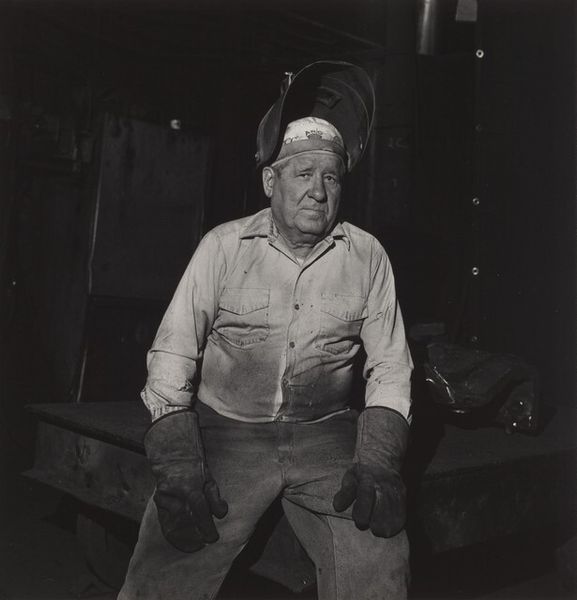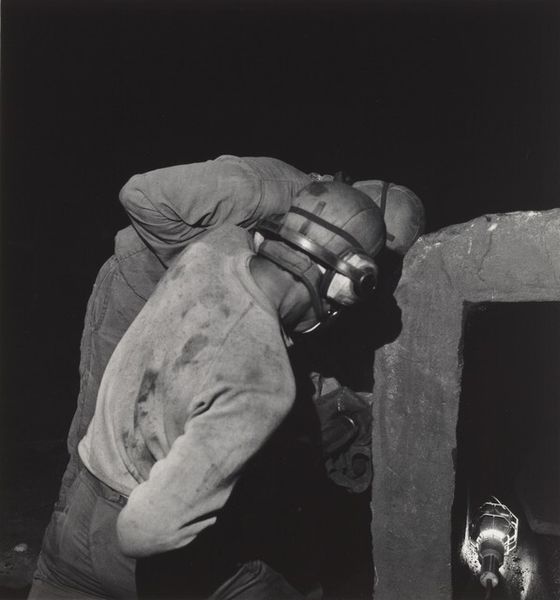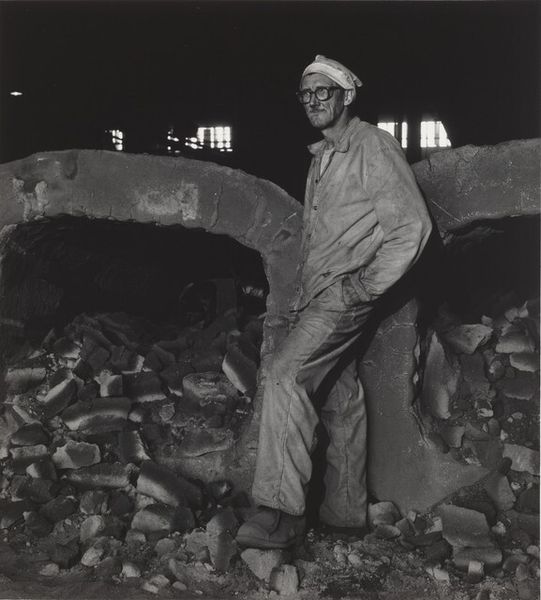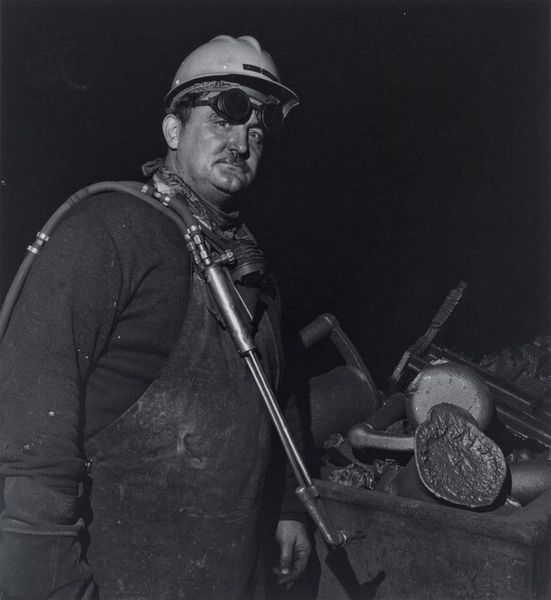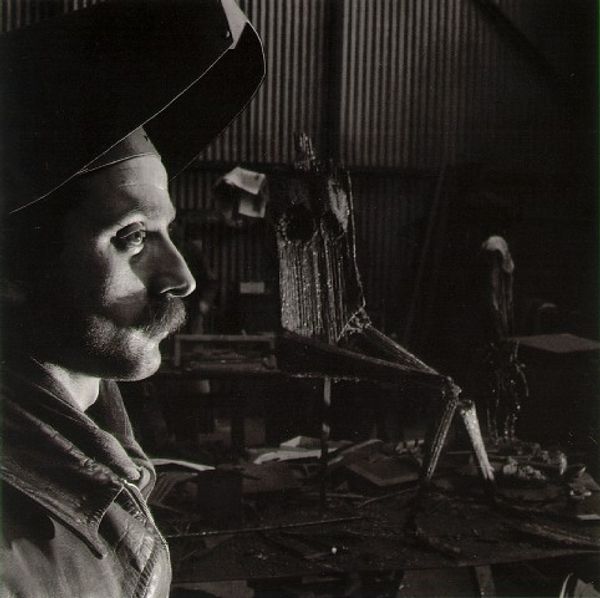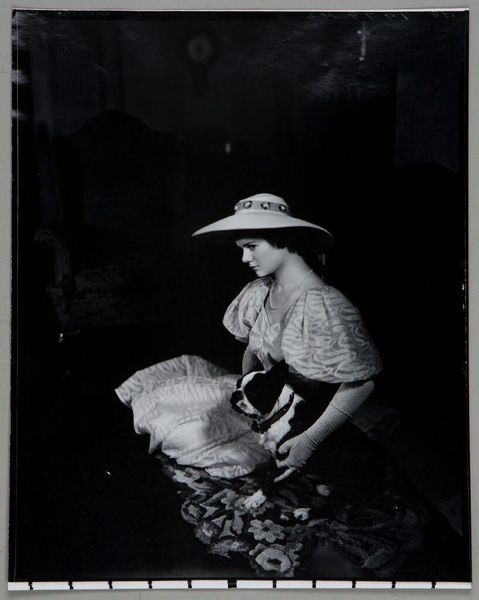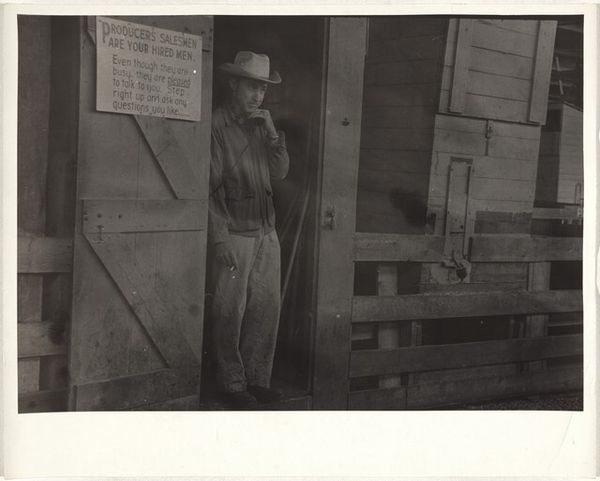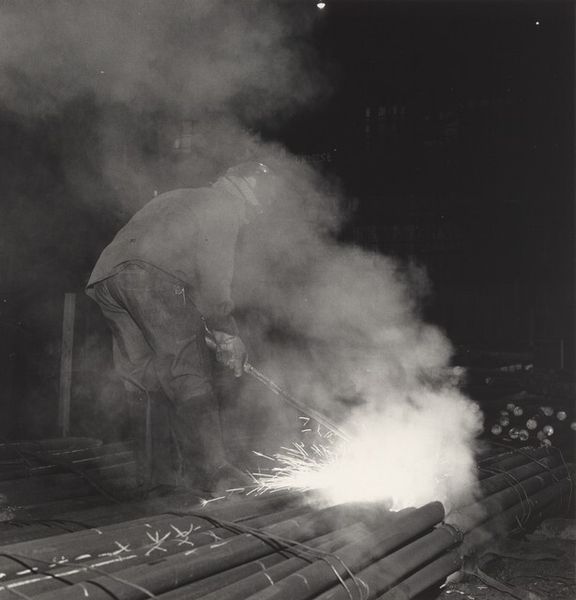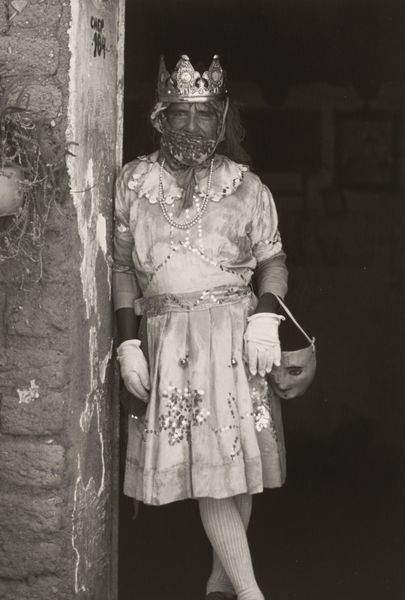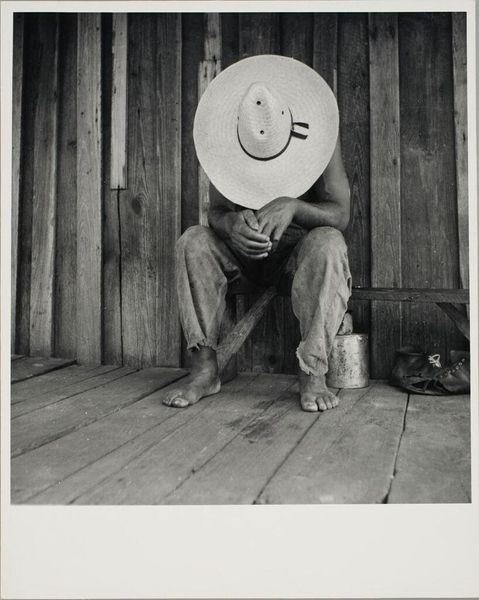
photography, gelatin-silver-print
#
portrait
#
black and white photography
#
black and white format
#
social-realism
#
photography
#
historical photography
#
black-arts-movement
#
black and white
#
gelatin-silver-print
#
monochrome photography
#
genre-painting
#
monochrome
Dimensions: image: 17.6 x 18 cm (6 15/16 x 7 1/16 in.) sheet: 25.3 x 20.3 cm (9 15/16 x 8 in.)
Copyright: National Gallery of Art: CC0 1.0
Editor: We’re looking at Milton Rogovin’s "Atlas Steel Casting," part of his "Working People series," taken between 1978 and 1979. The stark black and white photograph captures the intensity and grit of industrial labor. What's your take on this, considering its historical context? Curator: Rogovin's work here exemplifies the social realist tradition, amplified by his engagement with the Black Arts Movement. Note how this portrait elevates the worker; how does it stand in contrast to how industry workers are usually represented, especially Black workers in the late 70s? It critiques the usual invisibility. Editor: It’s powerful, and it feels like a very direct statement. The subject's gaze is so compelling. What do you think he’s trying to communicate about the individual within these larger systems? Curator: He’s spotlighting the agency and dignity of the individual. Rogovin, as a pharmacist turned photographer, saw the political potency in bearing witness. He offers counter-narratives to mainstream representations of labor. Look at the contrast between the harsh working environment and the worker's very human expression. What does that say about the photographer’s perspective? Editor: That juxtaposition really underscores his respect. It pushes back against the dehumanization inherent in industrial work. I also appreciate that the photo itself is a gelatin silver print, giving it this classic, timeless feel. Curator: Precisely! And that medium links him to earlier documentary traditions, where photography was deployed for social reform. How might displaying work like this in a gallery space change its reception? Editor: By placing it in a gallery, it transforms from a simple document into a subject for contemplation and broader discussion, giving visibility to these individuals in a powerful new setting. Curator: Exactly, it opens dialogues about labor, race, and the politics of representation. Rogovin prompts us to reconsider whose stories are told, and where they are told. Editor: I hadn't considered it that way, that galleries can elevate certain stories over others. It changes my understanding of Rogovin's project a lot. Curator: These are vital questions that artworks can inspire, reminding us that the context in which we view art drastically affects its meaning and social function.
Comments
No comments
Be the first to comment and join the conversation on the ultimate creative platform.
